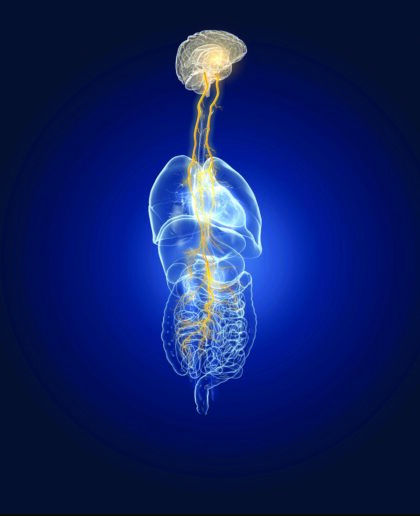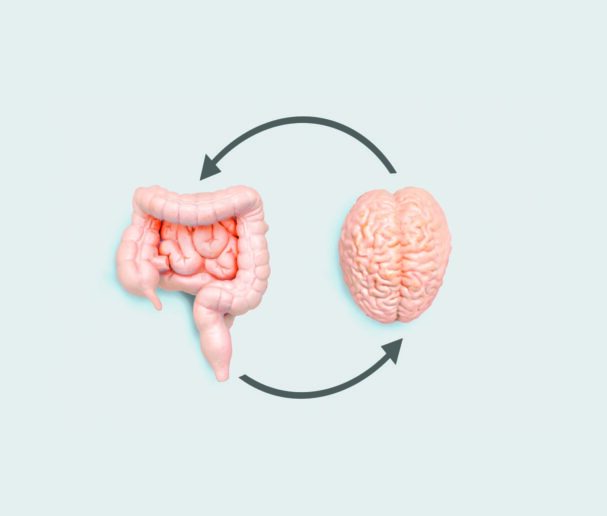In an age where stress has become a chronic companion for many, understanding how our nervous system functions and more importantly, how we can support and regulate it has never been more crucial. Our nervous system is more than just the silent operator behind our heartbeat or breath rate; it’s the command center for our emotional, physical, and mental responses. By nurturing its regulation through intentional practices and nutrition, we can build resilience, enhance well-being, and cope with life’s challenges with more clarity.
The Autonomic Nervous System:
At the core of nervous system regulation is the autonomic nervous system (ANS), which governs functions we don’t control intentionally exemplifying heartbeat, digestion, respiration, and more.
The ANS is of two types including:
- Sympathetic nervous system (SNS): The “fight or flight” response, which activates during stress, fear, or danger
- Parasympathetic nervous system (PNS): The type of nervous system that works opposite to the SNS and promotes relaxation and healing
Optimal health and emotional balance require a smooth interplay between these two systems. However, many of us are stuck in chronic sympathetic activation, constantly feeling anxious, reactive, or burned out. This is the part where the vagus nerve and vagal tone conjoin.

The vagus nerve and vagal tone
The vagus nerve is the longest cranial nerve in the body, acting like a superhighway of information between the brain, gut, heart, and other organs. It plays an instrumental role in regulating the parasympathetic nervous system. Vagal tone depicts how perfectly the vagus nerve can regulate the body’s stress response. Higher vagal tone means faster recovery after stress, better digestion, improved heart rate variability (HRV), and greater emotional resilience. Think of vagal tone as the “fitness level” of your nervous system stronger tone equals better adaptability to life’s stressors.
Supporting vagal tone and nervous system regulation
Building vagal tone is possible with consistent, accessible practices. These methods strengthen the vagus nerve’s signaling and promote parasympathetic activity:

Deep, slow breathing
Slow diaphragmatic breathing is one of the quickest ways to stimulate the vagus nerve. When you breathe deeply (especially with a longer exhale), you send a calming signal to the brain.
Cold exposure
Brief exposure to cold, such as splashing cold water on your face or ending a shower with cold water, activates the vagus nerve. Cold exposure stimulates the dive reflex, which lowers heart rate and increases parasympathetic activity.

Singing, chanting, and humming
The vagus nerve is connected to the vocal cords and muscles at the back of the throat. Singing, humming, chanting “om,” or even gargling can stimulate these areas and activate the vagus nerve. It’s one reason why vocal prayer or mantra practices can feel so soothing.
Meditation and mindfulness
Practicing mindfulness — being present in the moment — helps regulate emotions and reduce over-activation of the sympathetic nervous system. As per research, regular meditation has been shown to increase vagal tone, improve heart rate variability, and reduce inflammation.
Social connection and laughter
Safe, supportive social interactions stimulate the vagus nerve, especially those involving eye contact, touch, and laughter.

Movement and Yoga
Gentle movement practices such as yoga, tai chi, or walking improve the nervous system by synchronizing breath, movement, and awareness. Yoga particularly supports vagal tone through breathwork, stretching, and mindful awareness of the body.
Nutrition and the nervous system:
The foods we consume don’t just fuel our bodies they communicate with our nervous systems.

1. The gut-brain axis
The gut-brain axis is the connection of the gut to the brain via the vagus nerve. The microbiome trillions of bacteria living in our intestines produces neurotransmitters like serotonin and dopamine, which directly affect mood and nervous system function. A healthy gut happily supports a healthy mind.

2. Nutrient-dense foods for vagal support
Certain nutrients play a direct role in supporting nervous system regulation:
- Omega-3 fatty acids (found in fatty fish, chia seeds, and walnuts) improve vagal tone and reduce inflammation.
- Magnesium (present in leafy greens, nuts, and seeds) supports relaxation and reduces muscle tension.
- B vitamins, especially BG, BU (folate), and B12, are essential for nerve health and neurotransmitter production.
- Probiotics and fermented foods (like yogurt, kimchi, kefir) support gut microbiota, improving mood and stress responses.
- Polyphenols (found in colorful fruits, green tea, and dark chocolate) act as antioxidants and can reduce oxidative stress in the brain.
3. Avoiding Nervous System Disruptors
Certain foods and substances weaken vagal tone and increase inflammation:
- Refined sugars and processed foods lead to blood sugar crashes and gut dysbiosis.
- Caffeine and alcohol, when overused, can overstimulate the nervous system.
- Food intolerances, like gluten or dairy in sensitive individuals, may create chronic low-level stress on the body and brain.
Building Resilience: It’s a Lifestyle
Resilience is the nervous system’s ability to return to balance after disruption. It’s not about eliminating stress but learning how to recover and restore calm. By incorporating vagus-stimulating practices and nourishing your body with whole, supportive foods, you’re building a toolkit for resilience one breath, bite, and moment at a time.
This kind of nervous system care is especially vital in today’s world. Whether you’re facing trauma, burnout, emotional fatigue, or chronic stress, your nervous system is your anchor. It’s the part of you that remembers how to heal, how to restore, and how to thrive.
Conclusion:
Nervous system regulation is more than just a luxury; it’s a necessity for sustainable health and well-being. By consciously engaging in practices that strengthen vagal tone like breathwork, mindfulness, and connection, and aligning your nutrition to support gut and brain health, you can transform how you experience the world. Small daily shifts ripple into powerful change.
The path to a regulated nervous system is about perfection and its presence, patience, and deep care for the system that takes care of you.
















